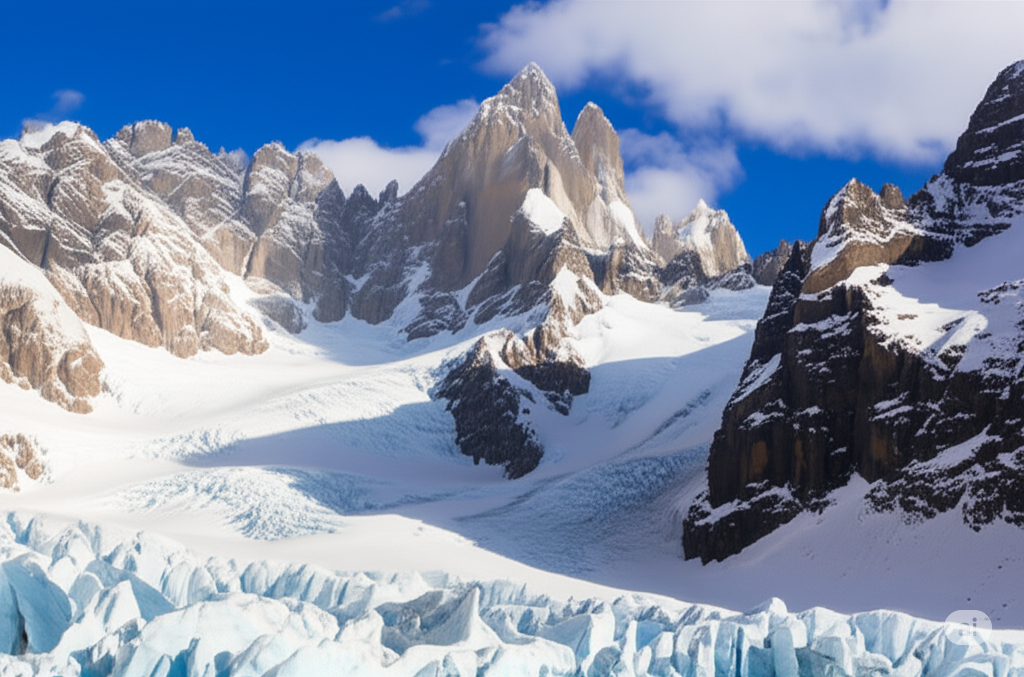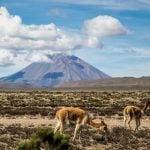Mount Cerro El Toro: Patagonia’s Ice and Rock Laboratory
Mount Cerro El Toro; it’s a unique technical climbing arena for experienced alpinists. Nestled in the wild and unpredictable heart of Patagonia, straddling the border between Argentina and Chile within Los Glaciares National Park, this peak presents the full spectrum of challenges inherent in ice, rock, and mixed terrain climbing. This article delves into the technical specifics, approaches, and crucial considerations for climbers eyeing Cerro El Toro. Mount Cerro El Toro: Patagonia’s Ice and Rock Laboratory
Location and Geographical Features
Geographically, Cerro El Toro is situated on the border of Argentina’s Santa Cruz province and Chile’s Magallanes y la Antártica Chilena region. The closest town and essential logistical hub is El Chaltén on the Argentinian side (approximately 49°17′ S, 73°02′ W). It stands to the south of the iconic Fitz Roy massif, in a lesser-known but technically demanding area. The mountain’s prominent glaciers are concentrated on its south and southeast faces. These glaciers are constantly sculpted by Patagonia’s characteristic winds and snowfall, making the routes dynamic and unpredictable.
Technical Climbing Route Analysis
Climbs on Cerro El Toro typically involve a complex and multidisciplinary approach. A standard route might include glacier travel, ice climbing, rock climbing, and mixed climbing sections.
Notable Routes and Difficulties:
Southwest Ridge: This is considered one of the “more standard” routes to the summit, but don’t mistake that for easy. It usually begins with glacier traverses, followed by solid rock climbing (Grade IV-V) and snow/ice ridges. Patagonia’s notorious winds can make this ridge exceptionally exposed and dangerous.
South Face: This face particularly appeals to more experienced ice climbers. It offers steep icefalls and intricate ice couloirs. The ice quality can be highly variable depending on weather conditions, making the climb very technical and risky. Expect WI4-WI5 or higher ice grades.
North Face: Less known and less frequently climbed, this face generally requires longer approaches and technical rock climbing. Being one of Patagonia’s shaded and wind-exposed faces, cold conditions exacerbate the climbing challenge.
Climbing Grades:
Depending on the specific route and conditions, climbs on Cerro El Toro can generally be graded from TD (Très Difficile – Very Difficult) to ED (Extrêmement Difficile – Extremely Difficult). AI (Alpine Ice) and M (Mixed) grades are commonly used.
Logistics and Approach
The approach to Cerro El Toro typically begins from El Chaltén. Trekkers usually head to Laguna Toro (approximately 49°20′ S, 73°08′ W), which serves as a base camp for advanced camps towards the mountain. The approach can take several days and involves varied terrain, including river crossings, forest sections, and glacier moraines. River crossings can be particularly challenging due to high water flow during melt season and may require rope assistance.
Essential Gear and Techniques
A comprehensive gear list is paramount for climbing Cerro El Toro:
Ice Gear: Dual ice axes, technical climbing crampons, ice screws (various lengths), Abalakov threader.
Rock Gear: A full rock climbing rack (quickdraws, carabiners, cams, nuts, slings), climbing shoes (if necessary).
Rope Set: A combination of dynamic and static ropes. Two-rope climbing techniques (twin or half ropes) are generally preferred.
Clothing and Shelter: Layered clothing (including waterproof and windproof outer shells), high-altitude sleeping bag, 4-season tent.
Navigation: GPS device, topographic maps, compass. Visibility can drop quickly in Patagonia’s rapidly changing weather.
Safety: Helmet, first aid kit, emergency satellite phone or satellite communication device.
Key Techniques:
Managing Patagonian Winds: The region’s infamous winds can make climbing extremely difficult. Climbers need to be proficient in wind management techniques (stance against wind, using body weight).
Fast and Light Climbing: With often short weather windows, moving as quickly and lightly as possible is key to success.
Glacier Rescue and Crevasse Awareness: Due to glacier traverses, proficiency in crevasse rescue techniques and glacier safety is essential.
Mixed Terrain Techniques: The ability to rock climb with ice axes and crampons in sections where ice and rock merge is vital.
Weather and Best Time to Climb
Patagonian weather is notoriously volatile and unpredictable. Sudden high winds, heavy snowfall, and system-wide storms can render climbing impossible almost instantly. The best climbing window is generally from late November to late February. Even during these months, good weather windows are often limited to a few days. Closely monitoring long-range weather forecasts and maintaining a flexible schedule are crucial.
At a towering 6,168 meters (20,236 feet), Cerro El Toro offers a true challenge for those seeking not only to summit but also to experience one of Patagonia’s most demanding alpinism adventures. Technical skill, physical fitness, proper gear, and an acute understanding of weather conditions are the keys to unlocking this formidable peak.




